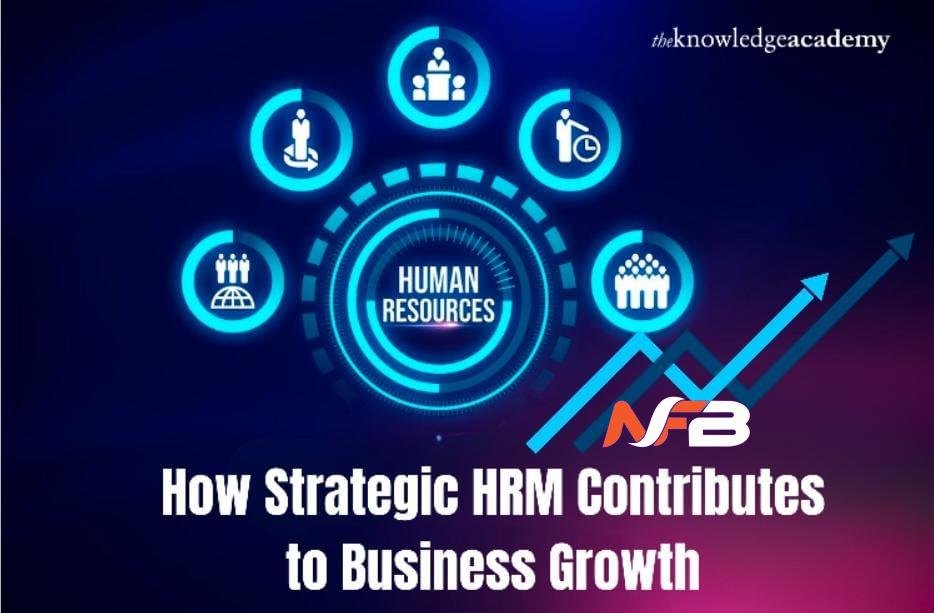What if your HR team could do more than manage leave requests and organise training days? With a CIPD Qualification, HR professionals are stepping into a new role, one that shapes business direction, not just supports it. But What is Human Resource Management when seen through a strategic lens? It becomes a powerful driver of growth. From hiring decisions to learning strategies, every action is aligned with long-term goals.
In this blog, we’ll explore how strategic Human Resource Management (HRM) fuels performance, innovation, and success across an entire organisation.
Key Contributions of Strategic HRM to Business Growth
Strategic HRM is not just about managing people. It is about enabling business growth through smart and future-focused practices. Below are the key ways strategic HRM strengthens organisational success and performance:
Creating a People-First Business Strategy
People are the foundation of the best business plans. Talent management is integrated into the company’s vision thanks to strategic HRM. This entails predicting future skill requirements, spotting capability shortages, and creating a pool of employees prepared to assume leadership roles.
Businesses can remain ahead of the curve by placing a strong emphasis on succession planning and growth. It goes beyond simply responding to business requirements. It’s about anticipating them. A stronger internal talent pool, fewer disruptions, and quicker growth are the results of this level of planning.
Fuel for Innovation and Change
HR becomes a driving force for innovation when it collaborates with senior leadership. Creativity flourishes when human resources are managed strategically and effectively.
This is accomplished through inclusive behaviours, learning opportunities, and adaptable frameworks. Employees are comfortable expressing new ideas. Learning and trying again are all encouraged. This innovative culture has a direct impact on business agility. This increases the company’s responsiveness and competitiveness in dynamic marketplaces.
Making Smarter Hiring Decisions
The right people in the right roles are essential for growth. Data is utilised by strategic HR practices to identify hiring requirements, expedite the hiring process, and align applicants with the organisation’s long-term objectives.
Nowadays, it’s no more than just filling a vacancy. Future potential and cultural fit are the main concerns of strategic HRM. Businesses increase productivity and lower turnover by doing this. This smart hiring strategy ensures that each new employee builds the business from the bottom.
Driving Employee Engagement That Lasts
How human resource management fosters engagement is among the most obvious responses to the question. Strategic HR is more than just benefits. It examines what inspires teams and develops frameworks around it.
Performance evaluations gain significance. Acknowledgement is prompt and equitable. Learning is ongoing and individualised. Employees tend to stay with a firm longer, perform better, and advance within it when they feel valued and heard. And the company benefits at every level when that happens.
Shaping Organisational Culture That Supports Growth
Culture is more than simply a slogan. It serves as the cornerstone for a company’s beliefs and development. A positive culture is directly shaped and maintained by strategic human resource management.
HR contributes to the development of a work environment where individuals feel valued, secure, and motivated by establishing clear values and modelling desired actions. Collaboration improves and decision-making speeds up when culture and business strategy are in sync. A good culture internally drives growth.
Aligning Learning with Business Goals
Very little is accomplished by training merely for the sake of training. However, progress occurs when HR connects learning initiatives to actual business goals. The company’s vision is aligned with employee development through strategic HR initiatives.
This entails determining the competencies that the company will require in the future and getting people ready now. There is always a reason for everything, from leadership development to technical upskilling. The organisation’s ability to manage complex problems and capitalise on new opportunities increases as its workforce increases.
Using Strategic HR Metrics to Power Business Growth
What you do not measure, you cannot grow. Key metrics are used in strategic human resource management to monitor performance. These metrics include employee satisfaction ratings, time to hire, training effectiveness, and retention rates.
However, it goes beyond numbers. It involves applying these understandings to identify trends, enhance systems, and make more informed decisions. HR is no longer merely a support job; with the correct data, it becomes a strategic advisor. This significantly enhances the organisation’s development path.
Conclusion
Strategic human resource management is not a buzzword. It is a core driver of business growth when done right. From smarter recruitment to long-term planning, it turns HR into a growth engine. A CIPD Qualification can prepare professionals to think this way. And if you’re ready to start that journey, The Knowledge Academy offers expert-led training to help you master the human side of business.












Leave a Reply